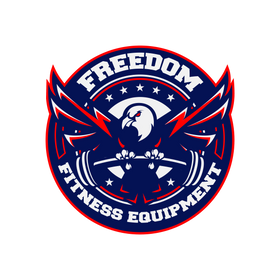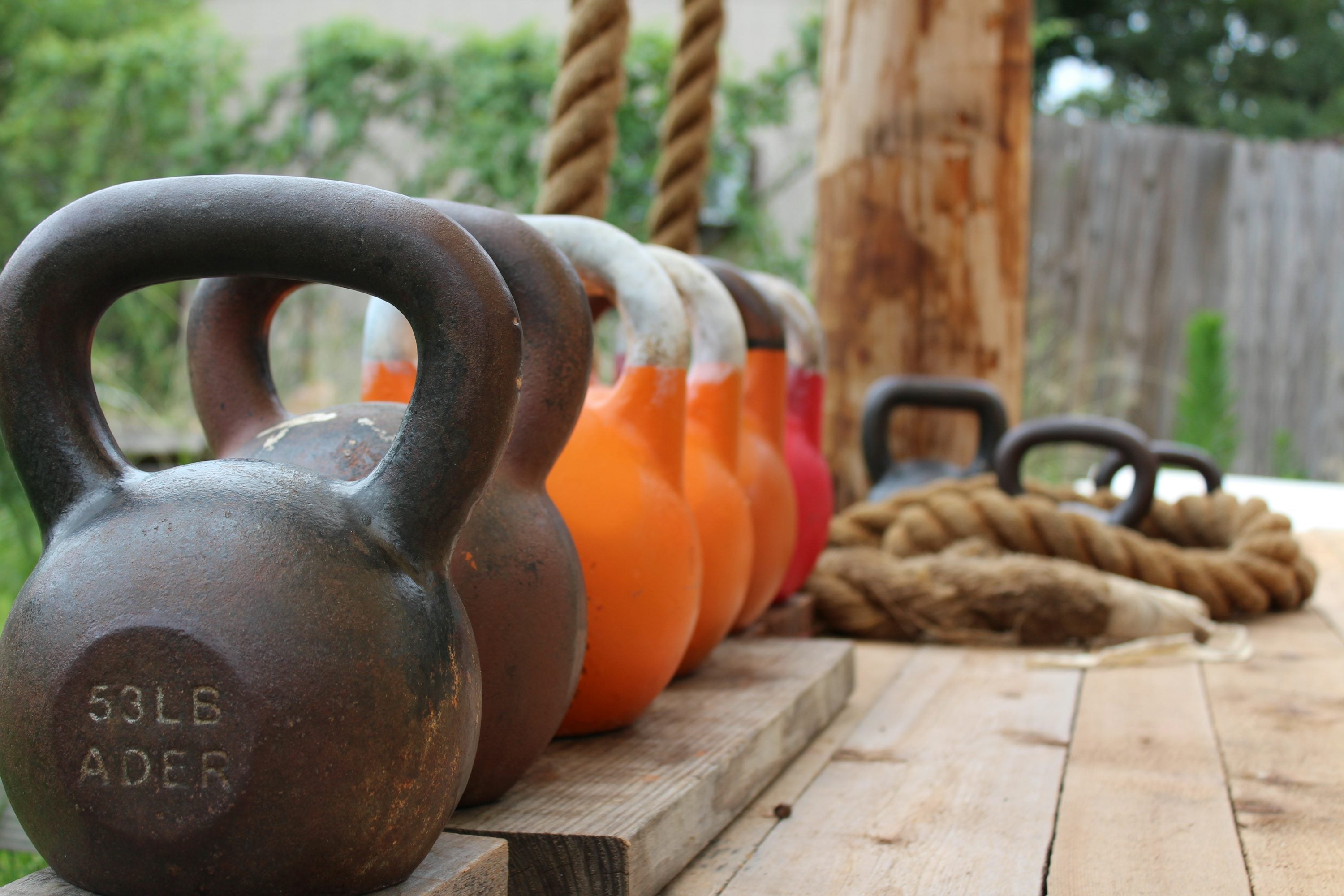If you are like most people, you may not have even noticed a difference when looking at the kettlebells at your local gym. You may also be wondering what on earth a competition kettlebell is used for. Is it to see who can swing the heaviest kettlebell? Maybe who can do the most Turkish get-ups in a minute? How about max distance farmer’s carry? While all are close, that’s not it, but don’t worry, we will address that shortly.
First off, let’s do a quick overview of kettlebells, the unique shaped gym tool
Kettlebells traditionally range in size from a few pounds to upwards of a couple of hundred pounds. However, the most common-sized kettlebell weights are typically around 40 lbs.
Kettlebells and kettlebell training are very similar to dumbbells, with a few notable exceptions.
#1) Weight distribution
The handle is on top of the kettlebell weight, as opposed to a dumbbell, where the handle separates the two ends of the dumbbell weight.
#2) Function
Because of the weight distribution, kettlebells are much easier to swing, making them great for kettlebell workouts like swings (American or Russian), snatches, and cleans.
Apart from these two factors, many of the same exercises you would use a dumbbell for can be replaced with a kettlebell. Exercises like farmers' carries, rows, presses, RDLs, and goblet squats.
So what’s the difference between competition and cast-iron kettlebells?
Here’s where the intricacies of kettlebells really come to light. There is a sport known by a few different names, but for the purpose of this article, we’ll refer to it as its most common name - kettlebell sport.
Kettlebell sport is a wild place.
If you have an interest in pain, endurance, grip training, and strength, this may be the sport for you. There are multiple events and variations within kettlebell sport, but I’ll try and summarize it for you.
Essentially, there are a few events you can compete in. Some include kettlebell cleans, half snatches, jerks, and clean and press (long cycle press). Typically, the competition format is most reps completed in 10 minutes. Now, the kicker here is that you cannot set the kettlebell down. 10 continuous minutes of a singular kettlebell movement - some events do allow multiple switches of hands, though. If you want a visual here, check out this video of Ivan Denisov completing 116 long cycle reps in 10 minutes using two 32kg (~70lb) kettlebells - just insane.
If that isn’t crazy enough, they have half-marathon and marathon events. The half-marathon event is 30 minutes, and the marathon is, you guessed it, 60 minutes. If you set the kettlebell down, you are disqualified.
I mean, biking is hard enough for 60 minutes, but kettlebell clean jerks for an entire hour - absolutely absurd.
Anyway, I tell you that to give you the backstory of the competition kettlebells.
Because competition kettlebells are designed to be used in competitions, the specifications have to be more precise. They are the premium kettlebells. Here’s what you can expect in competition kettlebells.
First, consistency.
This is probably the biggest difference between the two types of bells. Competition kettlebells are designed to be incredibly consistent - the bell diameter of the base, height of the kettlebell, and the handle diameter and width. While exact dimensions vary brand to brand, the ranges of competition kettlebells offered by brands are designed to be the exact same (or very close) regardless of weight, from a few pounds to almost 100 pounds.
On the other hand, cast iron kettlebells vary considerably in base diameter, height, and width of handle. If these kettlebells are poorly produced, they can also have slight uneven weight distribution.
These often come with a powder-coated exterior as well, giving it a grippy texture.
Competition kettlebells are typically not powder-coated.
This consistency is key. Competitors don’t want to have to relearn how to perform the movement based on the size of the handle changing or the bells becoming larger. If you have ever tried to perform double kettlebell swings, you know the size certainly matters and changes your technique.
Competition kettlebells are often mentioned as having a more comfortable grip helping with grip fatigue.
As competitors improve, the only thing that changes is the weight. This is really similar to Olympic weightlifting or powerlifting. The only thing that changes when you snatch 135lbs versus 255lbs is the weight; similarly, when squatting 225lbs versus 495lbs, the bar size doesn’t change, only the weight. You can imagine how frustrating it would be if the barbell diameter or length changed depending on the weight.
The other major difference is that competition kettlebells are typically made of steel, while iron kettlebells are obviously not.
Lastly, we can’t forget price. Iron kettlebells are almost always cheaper. Oftentimes by 50-100%.
So, which ones are best for your members?
Well, that really depends on your members. Let’s compare it to a powerlifting gym.
Can you get good at powerlifting with an Olympic barbell, bumper plates, home gym, and no singlet - of course. However, are these the ideal tools to become the best of the best in powerlifting - of course not. In the same way, you could improve in the sport of kettlebell using iron kettlebells, no doubt. But, is it optimal? Of course not.
So the question of what is best for your members depends on what your members are looking for when they come to their training sessions.
For 99% of gyms, I would say your members are not looking for competition kettlebells.
I could be wrong, but in my opinion, it is a very niche sport with little widespread interest. Would it make a couple of members extra happy? Maybe, but that’s something only you can answer.
Now, of course, if you are a gym specializing in kettlebell sport, this is a no-brainer, and you should no doubt purchase the competition kettlebells.
All in all, competition kettlebells are nice and serve a purpose for those looking to compete. They are premium kettlebells.
However, their high price tag and niche application make them a hard sell for the typical gym or home gym. The added value they add to your members is minimal, as your members can perform all of the same movements with either variation, regardless of fitness level or fitness goals. I would also add that because most cast-iron handles have an industry standard v-shape in comparison to the competition’s u-shaped handle, cast-iron kettlebells are easier to hold in the goblet position (useful for squats and lunges).
If your gym specializes in kettlebell sport, buy competition kettlebells; if not, buy cast-iron.
Side note, if you are looking for kettlebells for a smaller space or home gym, adjustable kettlebells can be a great idea. Adjustable kettlebells take up a fraction of the space and often come out cheaper per pound, making them great bells, especially for home gyms.
Sources
“The Battle of the Bells: Are Competition Kettlebells Better?” Bells of Steel, 24 July 2023, https://bellsofsteel.us/blogs/content/are-competition-kettlebells-better?srsltid=AfmBOoq51yIJJ-1ZqB7edbrupNsU7oWriLjYsixxLrTOTof6eb2JNqXf
“Kettlebell Sport. What’s It All About And Where Do I Start?” Kettlebell Nation, https://kettlebellnation.com/kettlebell-sport-whats-it-all-about/
“Kettlebells - Rogue Competition Kettlebells.” Rogue Fitness, https://www.roguefitness.com/rogue-competition-kettlebells.
“Rogue Kettlebells.” Rogue Fitness, https://www.roguefitness.com/rogue-kettlebells.




